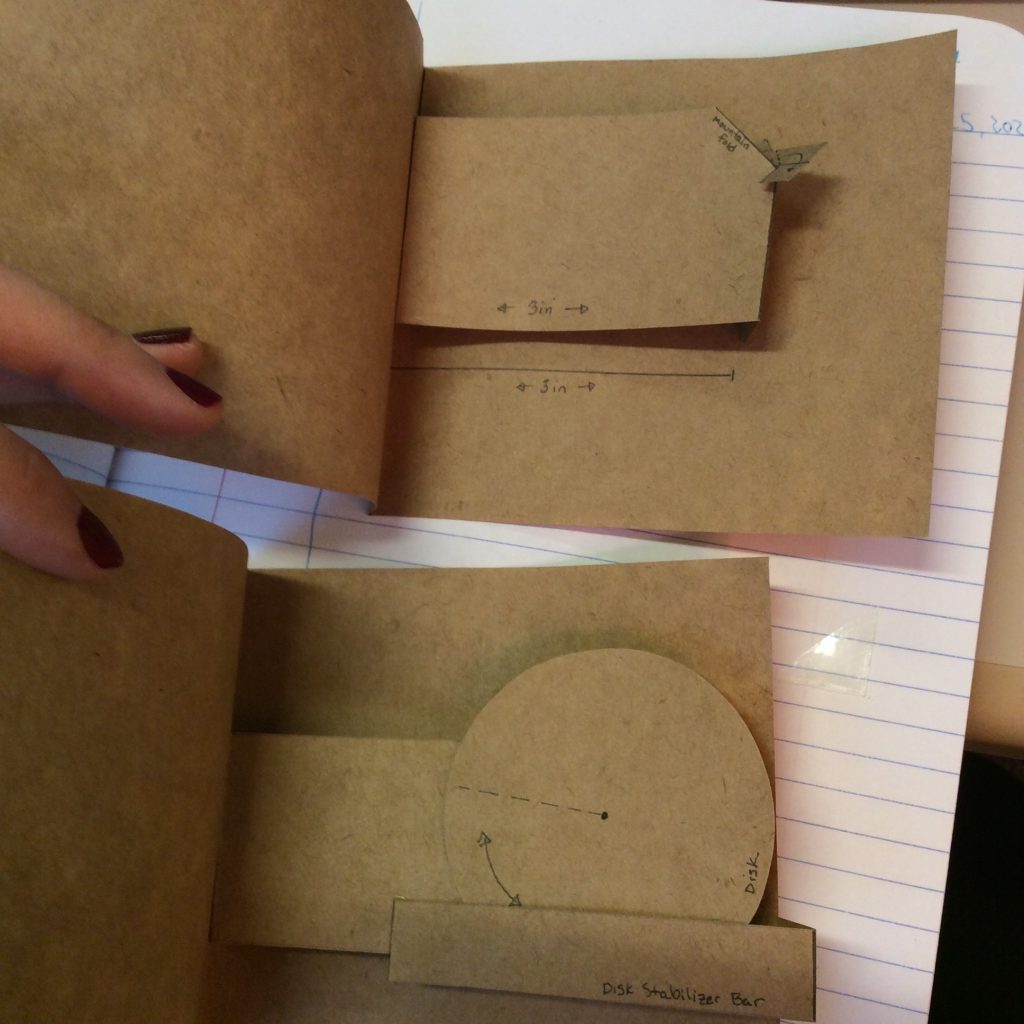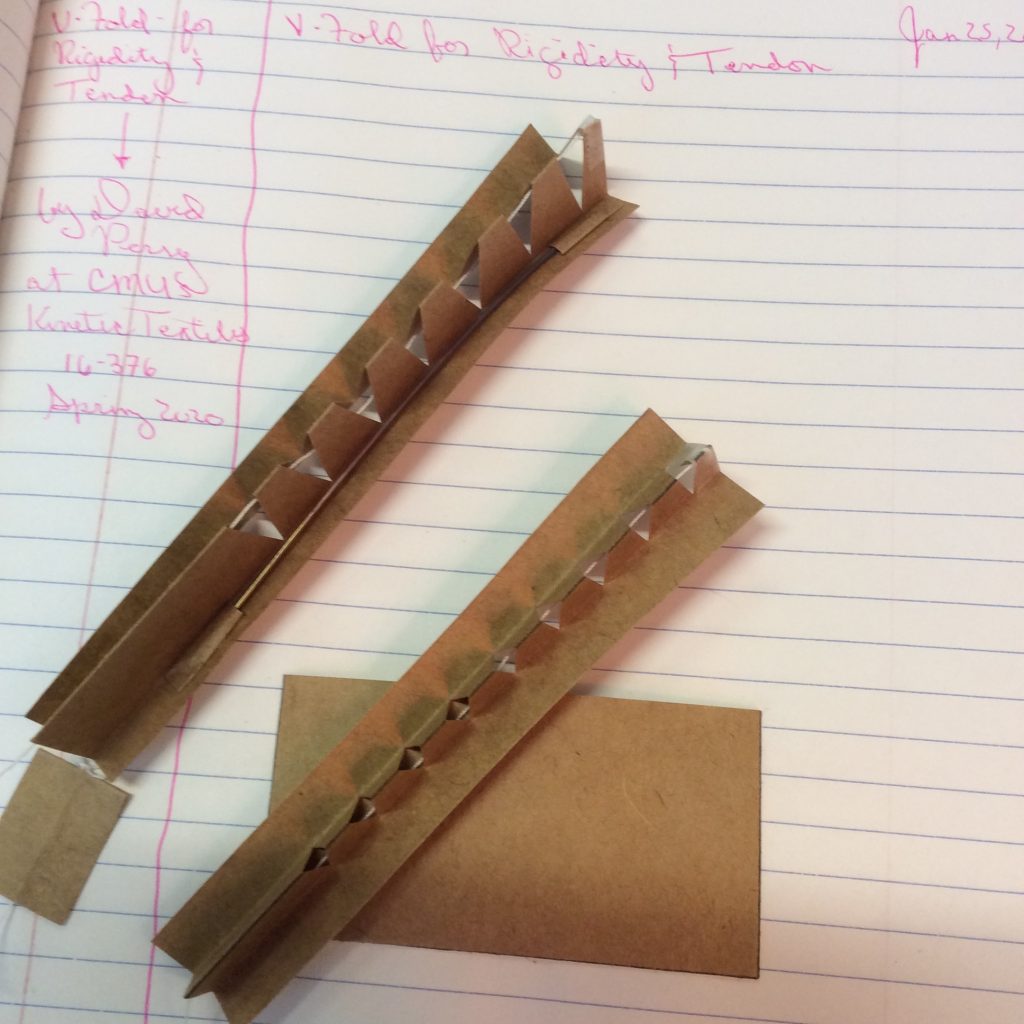In this assignment, I was challenged to create a mechanical structure that showed a symbiotic relationship between the structure and a movement found in the human body. As I was brainstorming ideas for the project, I created a notebook with smaller paper prototypes of simple mechanical devices such as box layers, V-Folds, and flaps. As I got to see how the paper responded to different tensions, motions, and actuators (including Nitinol Wire) I got a clearer idea of the prototypes I wanted to create for this assignment.


The first prototype I created used a variation of a pop-up book reverse flap technique. I made dual “flap” mechanisms inside the paper sleeve. These flaps flipped over in the reverse direction of the pull tab. I used a stiffer brown paper bag paper to get the “snapping” sound of the fans as they flipped forward toward my fingers. I found this to be a particularly challenging prototype when it came to anchoring the mechanism to my body. With this prototype, I ran into the issue of how to use one hand to activate the motion. I did not want to use my other hand to pull the tab because I wanted a more organic feel to the piece. This prototype was inspired by reptiles and fish fins and frills.
Sorry, there are two video versions. The narrower format has sharper image but I could not get this camera to go in the wider ratio. The wider screen ratio is blurrier because that camera is older.
My second prototype was inspired initially by having to grow out my faux hawk this summer. I also was intrigued by the head feathers of a Victoria Crowned Pigeon or Grey Crowned Crane (they kind of have a stiff bobbing movement as the bird moves its head). Originally I was going to attach this piece to my head but I had trouble anchoring the tendon to my body so that I could effectively pull the paper “faux hawk” into an arched position. The piece wanted to fall over to the side due to the weight of the fringe. Eventually, I decided to have the device curl upwards when I made a punching motion with my arm. I found that the more I played with this mechanism, the floppier it got as the paper got damaged under the weight of the fringe. I also liked the rustling sound it created when it curled back toward my arm. In the future, I would experiment with using a bike cable to add to the structure of the piece and make the overall motion more stable.
The third prototype was based on the curling motion of a caterpillar on a twig. The prototype uses the V-Fold technique (from David) with a tendon actuator. The curling structure is attached to a variation of four bar linkage so that it can move. The curling motion of the paper is mirrored to the curling motion of my finger. The curling V-Fold started to curl to the left side instead of in an even downward motion due to an uneven base.
In conclusion, I found that attaching mechanisms to a moving and fluctuating body poses problems because of the complex ranges of motion hinge joints and ball-in-socket joints have such as in the elbow and wrist respectively. The neck also creates additional problems because it has a wider range of motion and the distance between the connecting parts (such as a tendon or cable) can vary depending on the position of the body part. This creates uneven tension between the two points of attachment. In the future, I would like to continue experimenting with these types of mechanisms but I would try different anchoring techniques to create more stability between two points of attachment.
Leave a Reply
You must be logged in to post a comment.